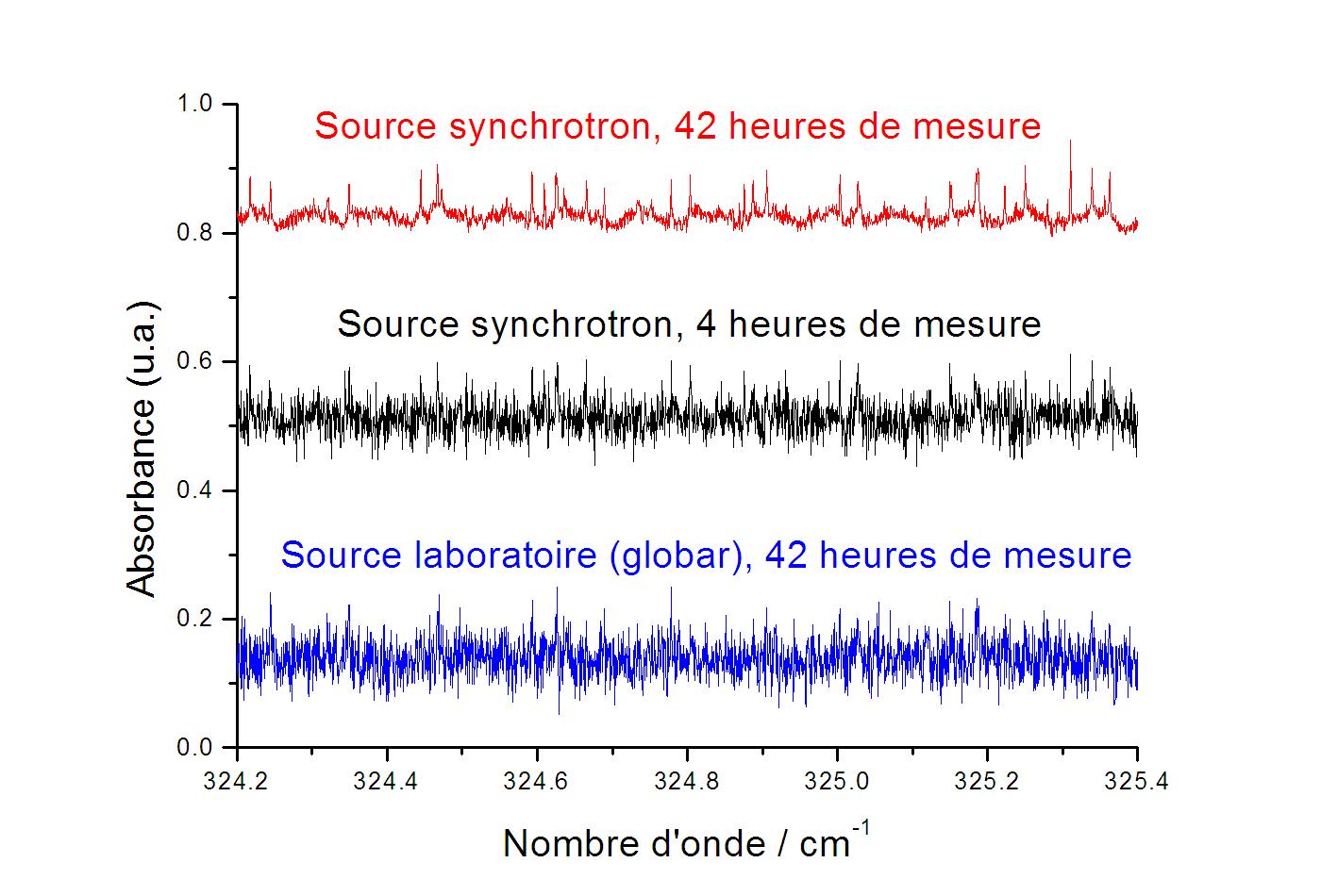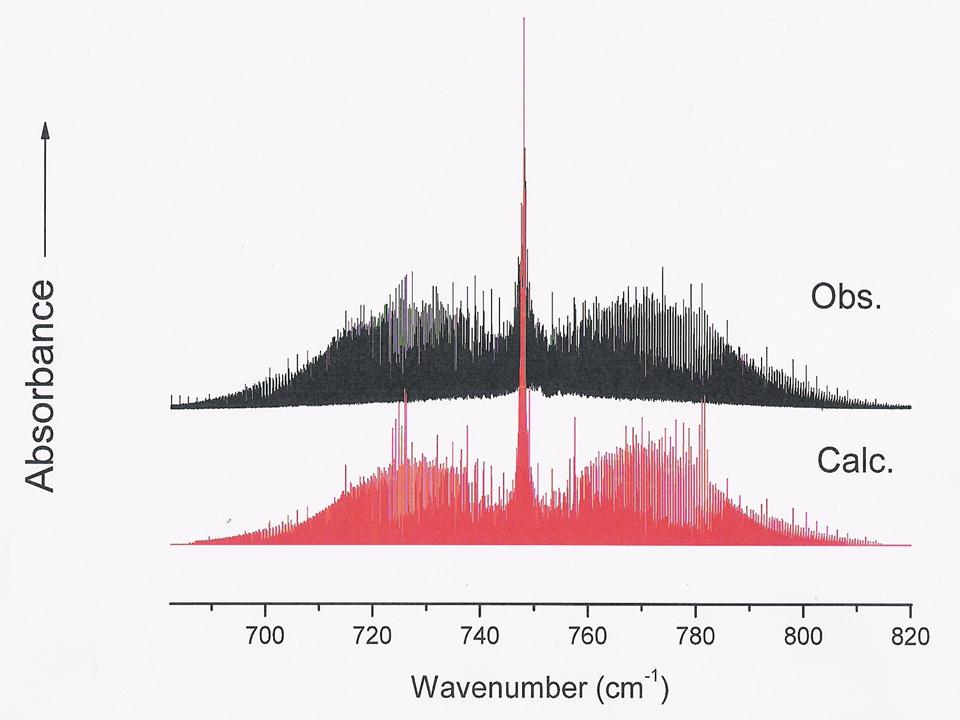Axis 1: Laboratory spectroscopy and instrumental developments
The various apparatus for experimental spectroscopy at LISA enable to cover a spectral domain (0.3-500 mm: 20-30000 cm-1) from the UV/visible to the infrared. This is achieved with a Fourier tranform Bruker IFS125HR Interferometer of maximum nominal resolution of 0.0019 cm-1 and several laser systems operating in the infrared. We have also a Bruker IFS 66V spectrometer (resolution 0.1 cm-1), coupled to a single-pass coolable cell and other room temperature cells standing high pressures (up to 150 atm) for which the effects of collisions on the spectral profiles are magnified.
Molecular spectroscopy is an area where instrumental innovations, such as the development of new light sources or of specific experimental devices , play a key role. We have developed a frequency difference generation tunable laser covering the 3-5 mm with a resolution of 1 MHz for ultra-high precision measurements of line integrated intensities and profiles. The various instruments available at LISA have been used for spectroscopic measurements of various stable and unstable species often in close collaboration with theoreticians. .
Researches at LISA are also involved in the use of Synchrotron Radiation (SR) from SOLEIL (beam lines AILES in the far infrared and DESIRS in the VUV). SR presents the advantage, when compared to traditional laboratory sources, of providing a high brightness and a wide tunability. In the far infrared, as demonstrated by figure (1a) below with a propane spectrum, the signal/noise ratio obtained with the SR is 4 to 5 times larger than with a conventional laboratory source. Note that the far infrared enables to study low frequency motions and that the analysis of those responsible for the propane band observed at LISA (Fig. 1b) enabled modeling of a Titan spectrum at 13.4 µm.
 |
Fig 1(a): Propane spectrum observed at a high resolution (0.0011cm-1) comparing the signal/noise ratio obtained with a classical source (globar) and with the synchrotron radiation of SOLEIL for different measurement times [Kwabia et al 2010].
 |
Fig. 1 (b): Overview of the propane spectrum recorded at LISA between 700 and 820 cm-1 [Flaud et al 2010] whose analysis was possible thanks to the FIR Spectra.
Let us also mention our identification and analysis of hot bands of C4H2 (di-acetylene) and HC3N (cyanoacetylene) that solved problems in the interpretation of the spectrum of the atmosphere of Titan.
In the VUV, the absorption cross sections of polyynes and cyanopolyynes have been studied since 2005 at the BESSY II synchrotron radiation facility. Since the DESIRS beamline at SOLEIL is operational, studies on species of astrophysical interest (CH3CN, CH3CH2CN, CH3CONH2, HCONH2, C4N2, C4H2) are performed. Photo-ionization cross sections and branching ratios of elementary photoreactions are determined. An aerosol source for the study of fragile and/or non-volatile species by photoionziation mass spectrometry has been developed. sections efficaces de photoionisation
Some molecules, such as acetamide or glycolaldehyde, observed in the interstellar medium in 2006, have a prebiotic and/or biomimetic nature. Radio astronomers are also trying to detect simple amino acids (e.g. glycine) which are monomers of biopolymers. The "PhotoBIO" project specifically studies the spectroscopy and photochemistry of such molecules with very low vapor pressures in the VUV region.

